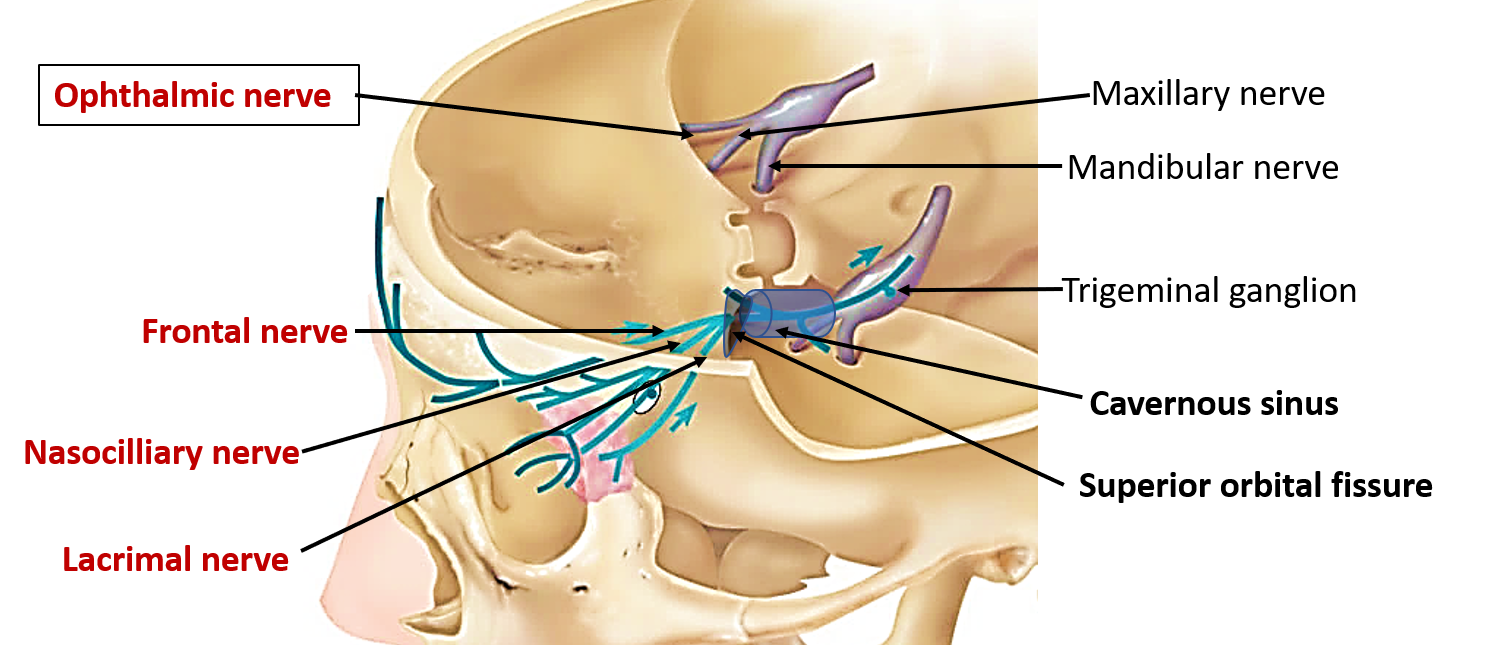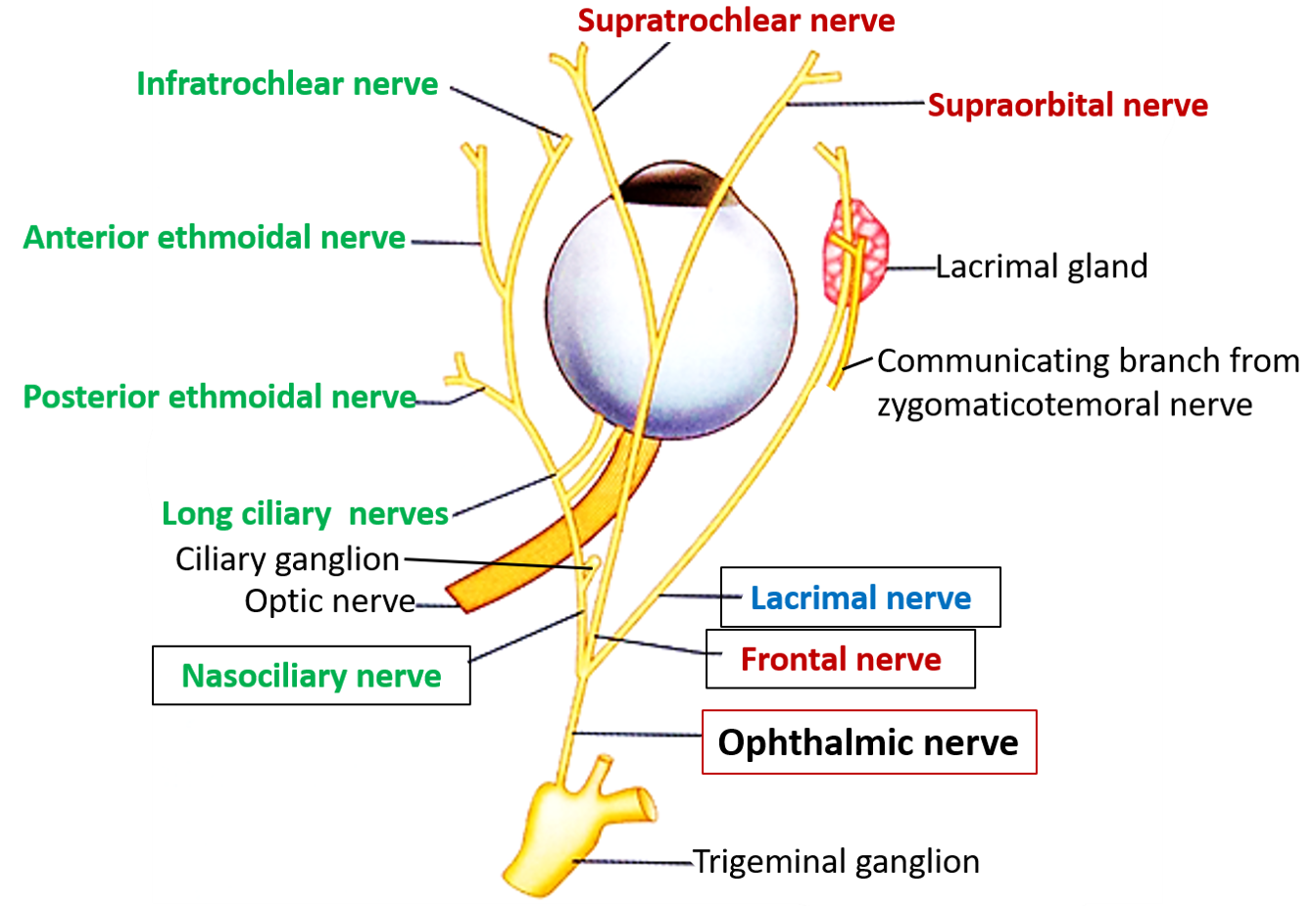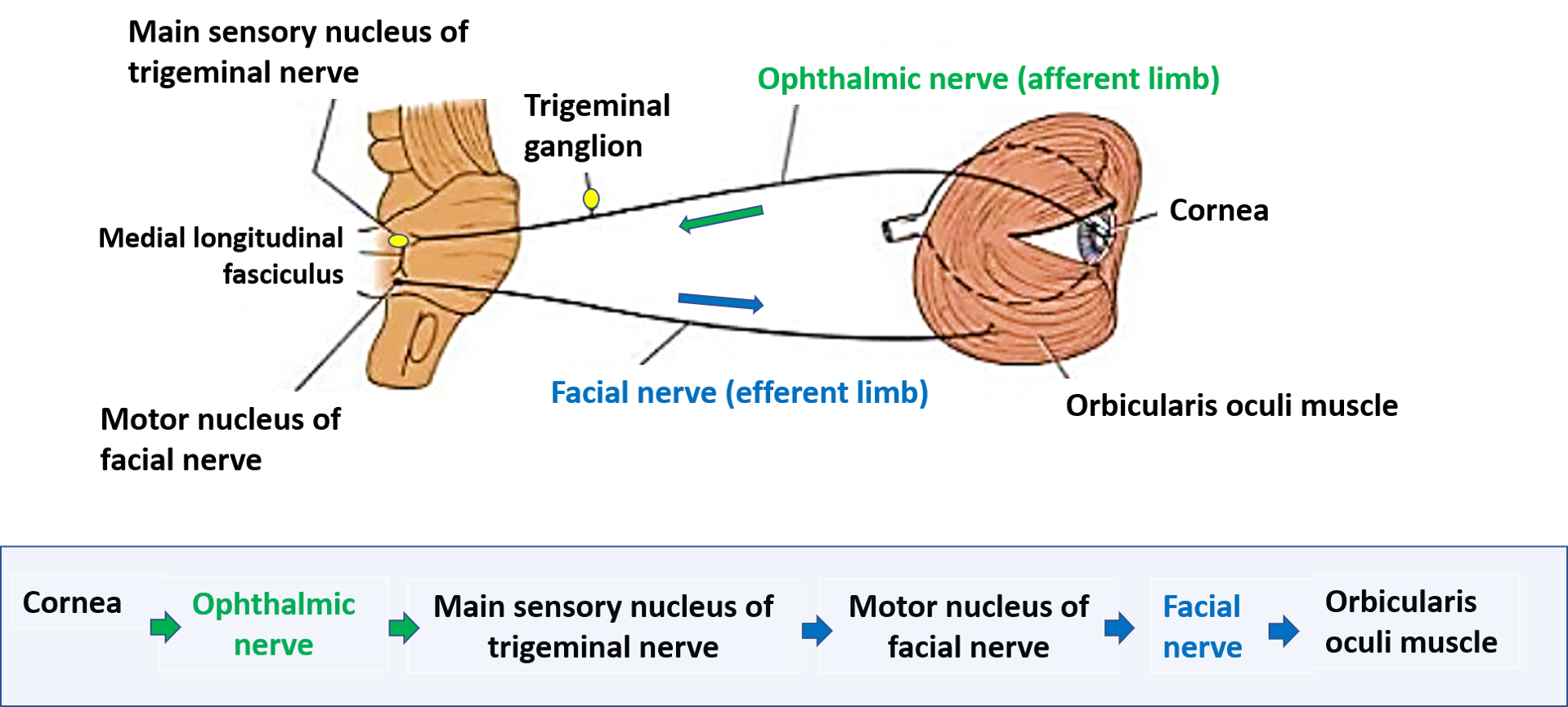Advertisements
Course of Ophthalmic Nerve
Ophthalmic nerve is the 1st division of trigeminal nerve.
- It is a pure sensory nerve.
- It commences from the anterior aspect of trigeminal ganglion.
- It passes along the lateral wall of the cavernous sinus.
- It then divides into 3 branches viz. nasociliary, frontal and lacrimal.
- All the three branches leaves the cranial cavity via superior orbital fissure and enter the orbit.

Branches of Ophthalmic Nerve and Its Distribution
Ophthalmic nerve divides into the following three branches, which enter the orbit through the superior orbital fissure.
- Lacrimal nerve: It is the smallest branch, it enters the orbit through the lateral compartment of superior orbital fissure. It receives a communicating branch from the zygomaticotemporal nerve, which conveys the parasympathetic secretomotor fibers for the lacrimal gland. It supplies:
- lacrimal gland, conjunctiva and upper eyelid.
- Frontal nerve : It is the largest branch and enters the orbit through the lateral part of the superior orbital fissure. It passes forward between the roof of the orbit and levator palpabrae superioris muscle. It divides into :
- Supraorbital nerve: supplies forehead, scalp, upper eyelid and frontal air sinus.
- Supratrochlear nerve: supplies forehead, scalp and upper eyelid.
- Nasocilliary nerve: It enters the orbit through the superior orbital fissure, within the tendinous ring. It crosses above the optic nerve from lateral to medial side. It gives following branches:
- A communicating branch to ciliary ganglion.
- 2-3 long ciliary branches to eyeball.
- Posterior ethmoidal nerve: supplies ethmoidal and sphenoidal air sinuses.
- Anterior ethmoidal nerve: divides into:
- Internal nasal nerve: divides into medial nasal and lateral nasal branches which supply nasal septum and lateral wall of nasal cavity respectively.
- External nasal nerve: supplies skin of nose
- Infratrochlear nerve: supplies eyelids, conjunctiva, lacrimal sac & skin of nose.

Applied Aspect
Corneal reflex
It is also known as blink reflex. It is an involuntary blinking of eyelids elicited by stimulation of the cornea (tactile, thermal or painful stimulation). Stimulation of the cornea elicits both a direct and consensual response (response of the opposite eye).As with all reflexes it has an afferent (sensory) and efferent (motor) limb.
The reflex is mediated by:
- Afferent limb: The nasociliary branch of the ophthalmic nerve carries the sensory fibers to the sensory nucleus of the trigeminal nerve in the pons.
- From the main sensory nucleus of trigeminal nerve the information is conveyed to the motor nucleus of both the facial nerves of both sides.
- Efferent limb: The temporal and zygomatic branches of the facial nerve initiate contraction of the orbicularis oculi muscles (the palpaberal part)This results in blinking.

An absent corneal reflex can be due to lesion of ophthalmic nerve or weakness or paralysis of the facial muscles or facial nerve palsy such as Bell’s palsy.

Nice article